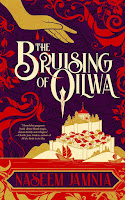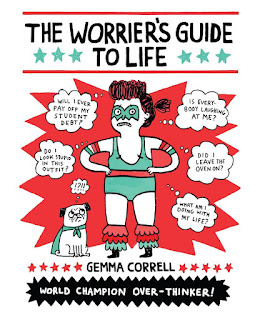Some books tell you their background in exquisite detail, laying out all of the world-building carefully and clearly, so the reader knows exactly what has happened.
I generally prefer the other kind. I'm a grown-up; I don't need someone to hold my hand.
Manuele Fior, I think, does entirely stories of the other kind - 5,000 km per second was a great story about people, told sideways and indirectly, and the shorter pieces in Blackbird Days were also non-obvious. His new graphic novel Celestia is also one of the other kind: a modern story with no thought bubbles or long explanatory speeches, set in a nearish future world that was utterly transformed by something that I doubt anyone left in the world understands.
Here's all the background we get, before the first page of comics:
The great invasion came by sea. It spread north, up the mainland. Many fled. Others took refuge on a small island. An island of stone, built in the water over a thousand years ago. Its name is Celestia.
We never know who or what invaded. I tend to doubt it was anything human, but it never gets any clearer than that. What happened to those who "fled" is also unclear. Unless they fled the planet somehow, though, they don't seem to be there anymore. Take that as as you wish.
I suppose it's possible that this was relatively local: maybe just this continent, this land. But that's not the sense I get.
Celestia, a generation later, must be self-sufficient by definition. It has no contact with the rest of the world, if there is a rest of the world. A new, post-invasion generation has grown up: this story follows two of them, Dora and Pierrot, the two characters on the cover. They both have telepathic powers, not entirely under control - and I would say that is not uncommon for this new generation. Maybe even more so as time goes on.
This is a story about humanity transformed, but that story is mostly in the background. The Great Invasion perhaps had something to do with the transformation: in the best possible scenario, it was some kind of Childhood's End thing. The worst possible scenario? Whatever your biggest fear is. Whatever is the most horrible thing you can think of.
Pierrot's father, Dr. Vivaldi, is one of the leaders of Celestia. At least, he has followers, so he's leading them - it's not clear if there's any real government on Celestia, and the back cover describes it as "an outpost for criminals and other outcasts." (As I've said before: if you're the only people left, there's no other government and you are not criminals, by definition.) Vivaldi has some kind of plans; I'm pretty sure they have to do with self-aggrandizement and power and likely some underlying theory of the outside world.
Pierrot is privileged, respected. He can reject his father and still come and go in his father's circles as he pleases. And his telepathy is mostly a positive thing in his life.
Dora, on the other hand, is being chased. She's in hiding, her telepathy lighting up unexpectedly, her mind only half her own. Vivaldi's group wants her, for something that the reader may suspect will not be good for her.
Before long, Pierrot and Dora flee Celestia, with the threat of violence behind them. They are the first to do so, we think, though Vivaldi talks about exploring the larger world, all the time.
Pierrot and Dora find people outside Celestia. But very few. And most of them are from the new generation: even younger, and even more different than their elders than Dora and Pierrot. (More Childhood's End, with maybe a touch of Midwich Cuckoos or creepier stories about transformed children.)
As they must, Dora and Pierrot visit a few places on the mainland, and will eventually return to Celestia for a confrontation with the people chasing them. We still don't quite know why they are in conflict, what the factions in Vivalid's group are, and why some of them would dare to threaten their leader's only son. But we come to the end, even without that knowledge.
Fior tells this story mostly quietly, in soft colors on large pages. Even the scenes of violence seem frozen; his panels are each a moment in time, inherently still. He will not tell you how to think about this; will not tell you everything that you want to know. If you only like the kind of story in which everything is explained five times, with captions including everyone's code names, this is not a book for you. But I hope more of you are grown-ups than that.






















